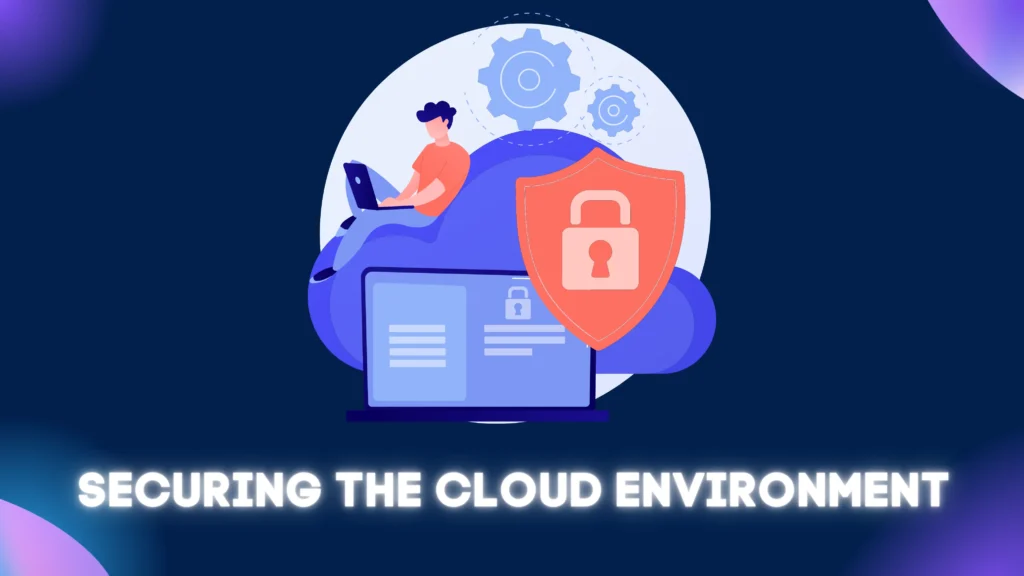Are you aware that Securing your cloud environment is really necessary? if not then why are you waiting? as a cyber expert you should know this thing. No problem! I am a cyber security expert and I am here to tell you about Securing your Cloud Environment: Best Practices and Solutions. Stay tuned on the article. I assure you that this knowledge will be very helpful to you
Introduction
Cloud computing has revolutionized the way organizations store and manage data. The ability to access data and applications from anywhere with an internet connection has made it an attractive option for businesses of all sizes. However, with the benefits of cloud computing come new security risks. In this article, we will discuss the best practices and solutions for securing your cloud environment.
Understanding Cloud Computing
Cloud computing refers to the delivery of computing resources, such as servers, storage, and applications, over the internet. It allows organizations to store and access data and applications from anywhere with an internet connection. Cloud computing offers several benefits, including scalability, cost savings, and increased productivity.
IaaS provides virtualized computing resources, such as servers and storage, while PaaS provides a platform for developing and deploying applications. SaaS provides access to software applications, such as email and customer relationship management (CRM) systems.
Each category of cloud computing brings its own set of security risks and challenges. For example, IaaS providers are responsible for securing the underlying infrastructure, but organizations are responsible for securing their data and applications. PaaS providers are responsible for securing the platform, but organizations are responsible for securing their applications and data. SaaS providers are responsible for securing the software and the data, but organizations are still responsible for securing their own users and access controls.
Cloud Security Risks
The use of cloud computing brings new security risks that organizations must address. One of the biggest risks is data breaches, which can occur if cybercriminals gain access to sensitive data stored in the cloud. Additionally, organizations may also face risks such as data loss, unauthorized access, and compliance violations.
Cloud computing brings new security risks, such as:
Data breaches: Data stored in the cloud is vulnerable to cyber-attacks and hacking, which can lead to sensitive data being compromised.
Data loss: Data stored in the cloud can be lost due to technical failures or human error.
Compliance violations: Organizations may face penalties and fines if they fail to comply with regulations, such as HIPAA and PCI-DSS when storing data in the cloud.
Insider threats: Employees or third-party vendors with access to cloud environments can intentionally or unintentionally cause a data breach.
Misconfigurations: Cloud environments can be misconfigured, which can lead to security vulnerabilities.
Best Practices for Securing Your Cloud Environment
To secure your cloud environment, it is important to implement best practices such as:
Using multi-factor authentication: This adds an extra layer of security by requiring users to provide two or more forms of identification.
Using encryption: Encrypting data both in transit and at rest makes it unreadable to unauthorized parties.
Keeping software and systems up to date: This ensures that any known vulnerabilities are patched.
Regularly reviewing and monitoring access: This helps to identify and prevent unauthorized access to sensitive data.
Implementing an incident response plan: This will help you to respond quickly and effectively in the event of a security incident.
In addition to the best practices mentioned before, organizations can also implement the following best practices to secure their cloud environment:
Implementing a zero-trust security model: This model assumes that all users and devices are untrusted until proven otherwise. Conducting regular security assessments: This helps organizations identify and remediate security vulnerabilities in their cloud environment.
Implementing a security incident response plan: This helps organizations respond quickly and effectively in the event of a security incident.
Isolating workloads: This helps to limit the potential impact of a security incident by isolating different workloads from each other.
Using a cloud security gateway: This provides an additional layer of security by inspecting traffic between the cloud and the organization’s network.
Cloud Security Solutions
There are several solutions available to help secure your cloud environment, such as:
Cloud access security brokers (CASB): These solutions provide visibility and control over cloud usage, including identifying and blocking malicious activity.
Cloud security posture management (CSPM): These solutions provide continuous monitoring of cloud environments, identifying and remediating misconfigurations that could lead to security breaches.
Cloud-native security solutions: These solutions are built specifically for cloud environments and provide security for the entire cloud stack, including infrastructure, platform, and application layers.
Identity and Access Management (IAM) solutions: These solutions provide centralized control over user access to cloud resources, including authentication and authorization.
Security Information and Event Management (SIEM) solutions: These solutions provide real-time monitoring and analysis of security-related data, including logs and alerts, to detect and respond to security incidents.
There are several solutions available to help secure your cloud environment, such as:
CASB solutions can also provide compliance, data loss prevention, and encryption.
CSPM solutions can also provide security automation, policy management, and remediation.
Cloud-native security solutions: These solutions are built specifically for cloud environments and provide security for the entire cloud stack, including infrastructure, platform, and application layers. Cloud-native security solutions can also provide network security, identity and access management, and data protection.
Identity and Access Management (IAM) solutions: These solutions provide centralized control over user access to cloud resources, including authentication and authorization. IAM solutions can also provide role-based access control, multi-factor authentication, and SSO.
Security Information and Event Management (SIEM) solutions: These solutions provide real-time monitoring and analysis of security-related data, including logs and alerts, to detect and respond to security incidents. SIEM solutions can also provide correlation, reporting, and threat intelligence.
By implementing these solutions, organizations can gain visibility into their cloud environment, detect and respond to security incidents quickly and ensure compliance with regulations. It’s important for organizations to evaluate their specific needs and choose the solution that best fits their requirements and budget.
It’s also important to note that, even with the best solutions and practices in place, organizations are still responsible for their own security in the cloud. They should always be aware of the latest threats and trends and adapt their security strategy accordingly.
Conclusion
Cloud computing offers many benefits, but it also brings new security risks. To secure your cloud environment, it is important to implement best practices such as using multi-factor authentication, and encryption, and regularly reviewing and monitoring access. Additionally, there are several solutions available, such as cloud access security brokers, cloud security posture management, and cloud-native security solutions, to help secure your cloud environment. By implementing these best practices and solutions, organizations can protect sensitive data and minimize the risk of security breaches in the cloud.


